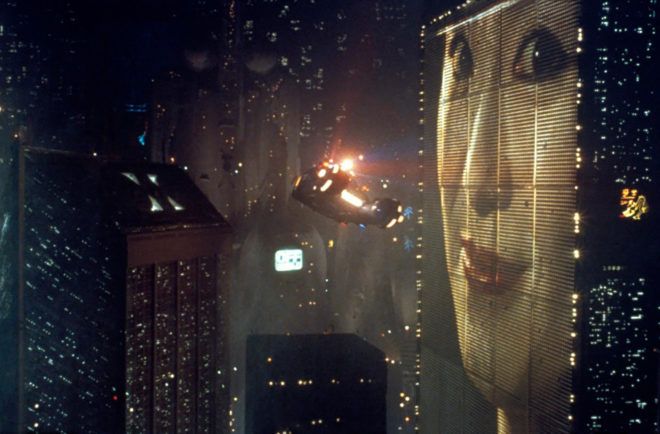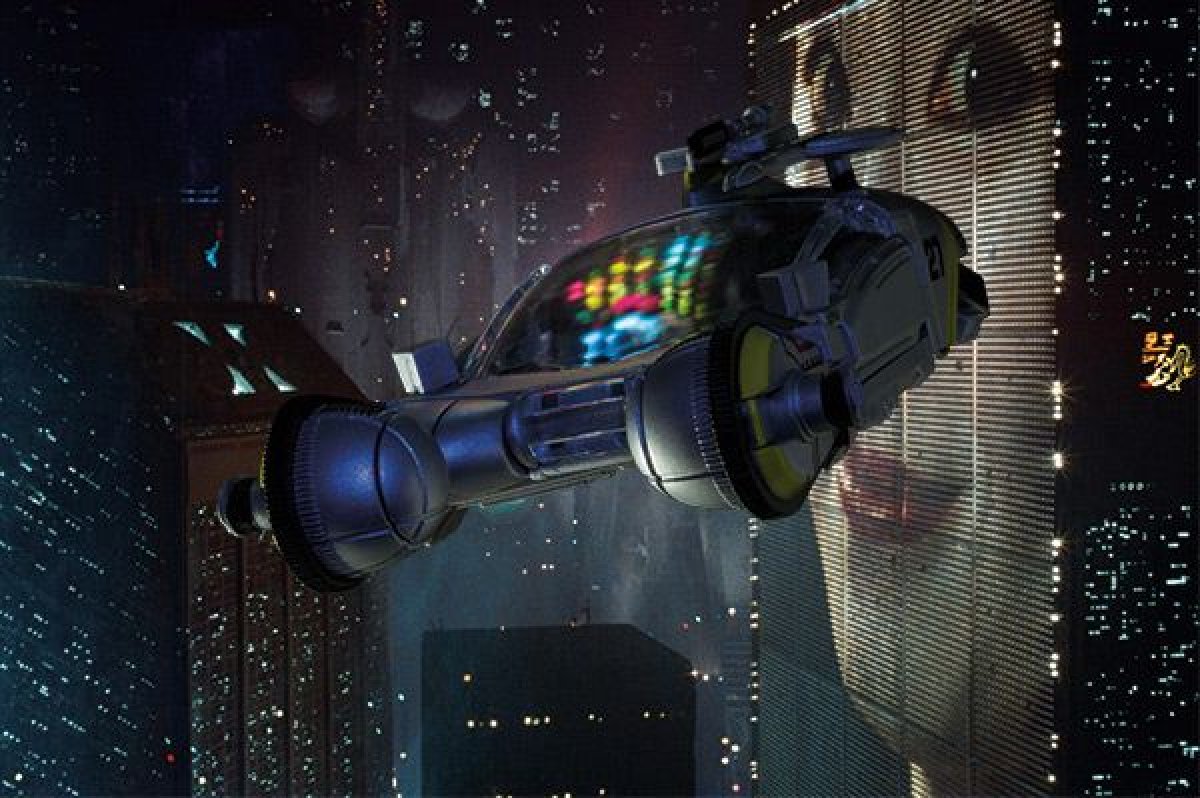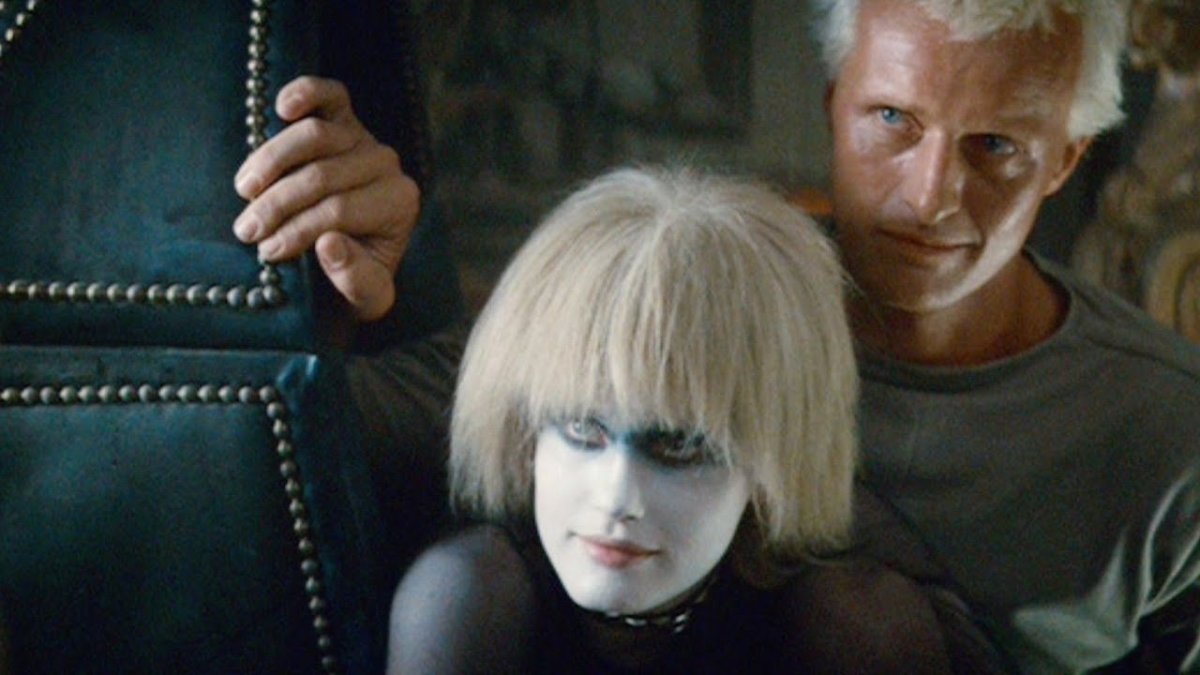
When Blade Runner hit theaters in 1982, audiences marveled at the vision of director Ridley Scott. The film, based on Philip K. Dick's classic novel Do Androids Dream of Electric Sheep, had futuristic elements—it was imagining the city of Los Angeles in 2019, 37 years in the future—but the aesthetic was distinctly old-fashioned, like a noir film from the '40s. There were none of the sleek, pristine surfaces of, say, Stanley Kubrick's 2001; rather, Blade Runner harked back to the prescient vision of 1973's Soylent Green, which imagined deep economic inequality—utopia for a few, dystopia for most—and climate disaster (in Blade Runner, sunny L.A. has become a place of non-stop rain). Scott's world had flying cars and humanoid robots (called replicants), but it also had overcrowding, poverty and garbage-strewn streets, as well as a neon aesthetic reminiscent of Tokyo.
Blade Runner 2049, the sequel directed by Denis Villeneuve, opens October 6, and you have to wonder: how close are we to the future Scott's Blade Runner imagined for 2019?
Vast economic inequality? Check. Climate change? Check. Overpopulation? Check. Japan, maybe not so much. But what about the flying cars, humanoid robots and artificial intelligence? It's complicated.

Flying Cars
Innovations in transport lead directly to Elon Musk, CEO of SpaceX, Tesla, The Boring Company and a great many other future-focused companies. Musk has long fielded questions about flying cars with a packaged response his fans call "the guillotine joke." When asked whether Tesla will ever release a hovercraft version of its electric car, he typically describes pedestrians being "guillotined" by falling hubcaps or faulty machinery careening toward earth. In a nutshell, he's less interested in flying cars than he is in sustainable power sources and streamlined public transport. Not that there's anything wrong with that.
But others are very interested. A company called Terrafugia earned a necessary exemption from the Federal Aviation Administration in 2016 to develop its "light sport aircraft." And Aeromobil, a Slovakian company, unveiled a $1.2 million flying car in Monaco this year. For the moment, these prototypes look more like little airplanes with wheels than the police-issue Spinner that Harrison Ford's blade runner Rick Deckard drives. That fictional car, which uses vertical take-off and landing technology (VTOL), looks pretty similar to mock-ups released by the Toyota-funded flying car initiative, Cartivator, but they are only designs at this point. Other companies using VTOL in their prototypes include HAX and Airbus and Uber, which recently announced its intention to develop flying taxies.
Looks like the average American isn't holding her breath for any of these, however. A 2017 survey conducted by the University of Michigan's Sustainable Worldwide Transportation Program found that 63 percent of us are "very concerned" about the dangers these vehicles would present, and 83 percent would prefer VTOL cars, which take off in the traditional runway-style manner. So flying cars for everyone by 2019? Not happening.

Humanoid Robots
We're a long way from replicants, which is probably a good thing. Intelligent robots currently fall into two camps: those intended to replace "blue collar" human laborer—the job-stealing bots from Boston Dynamics's viral videos—and those intended to replace sex partners as multi-faceted toys.
Lifelike sex dolls, like the ones available from RealDoll, have been popular for years (coincidentally, Blade Runner 2049 star Ryan Gosling appeared in a rom-com with just such a sex doll in Lars and the Real Girl), but sex robots like Blade Runner's Pris (Darryl Hannah) are a long way off. Manufacturers are trying to nail synthetic skin material that feels lifelike to the touch, as well as genitals that respond the way a human's would, with warmth and, more creepily, self-lubrication. In addition, enthusiasts would like their robots to have pre-programmed personalities, allowing them to respond to verbal and physical affection. It's worth noting that sex robots available at brothels tend to be more popular than human sex workers. Or maybe it's not worth noting that.
On a more PG note, there's "Pepper," a companion robot model designed by SoftBank Robotics, which can analyze human emotions, changing its behavior to fit your mood. "Pepper" models are currently working customer service in select Japanese locations; as a novelty (we hope) a few families have adopted them into their homes.

Artificial Intelligence
What "Pepper" demonstrates is the mere simulation of intelligence, using a basic input/output method. Its systems are similar to the AI used in Amazon's Alexa and Microsoft's Cortana (now an AI hybrid) or Apple's Siri, and none of these systems would be able to beat the lie detectors (or "Voight-Kampff" machine) that blade runners like Decker use to detect replicants (through measurement of iris contraction).
There are, however, promising innovations on the horizon. On Wednesday, Google announced Voice Match, a program in their smartphones and home systems that can tell the difference between the voices of family members. MIT has developed a robot that can, at a limited level, understand human context. The AI system, called ComText, boasts the ability to "hear" a complicated set of instructions from a human user, deduce what the human is actually requesting, and complete a task based on those assumptions. It's the difference, Inverse's Neel Patel explains, between being able to tell a robot to bring you an exact food item from an exact, nearby location and asking a robot to "find me something to eat." If you tell your Google smarthome technology, "Goodnight," its advanced AI knows to turn down the lights and remind you of your appointments the next day. Not exaclty Roy Batty's "tears in the rain" monologue, but a necessary first step.
Blade Runner supposes that the development of advanced AI will cause infighting between the human creator and the synthetic creation, but Musk fears the conflict will consume us much earlier. In response to a comment by Russian Prime Minister Vladimir Putin—who remarked that the nation that leads the world in AI tech will claim ultimate power—Musk tweeted the ominously cryptic, "It begins." Later, he elaborated, explaing his belief that the race for superior artificial intelligence is the catylist most likely to ignite a third World War.
Suddenly, Ridley Scott's damp, dark 2019 Los Angeles looks appealingly quaint.
Uncommon Knowledge
Newsweek is committed to challenging conventional wisdom and finding connections in the search for common ground.
Newsweek is committed to challenging conventional wisdom and finding connections in the search for common ground.
About the writer
Emily is a culture and entertainment writer living in Manhattan. Previously, she ran the culture section at Inverse and has been published in The Daily ... Read more
To read how Newsweek uses AI as a newsroom tool, Click here.








